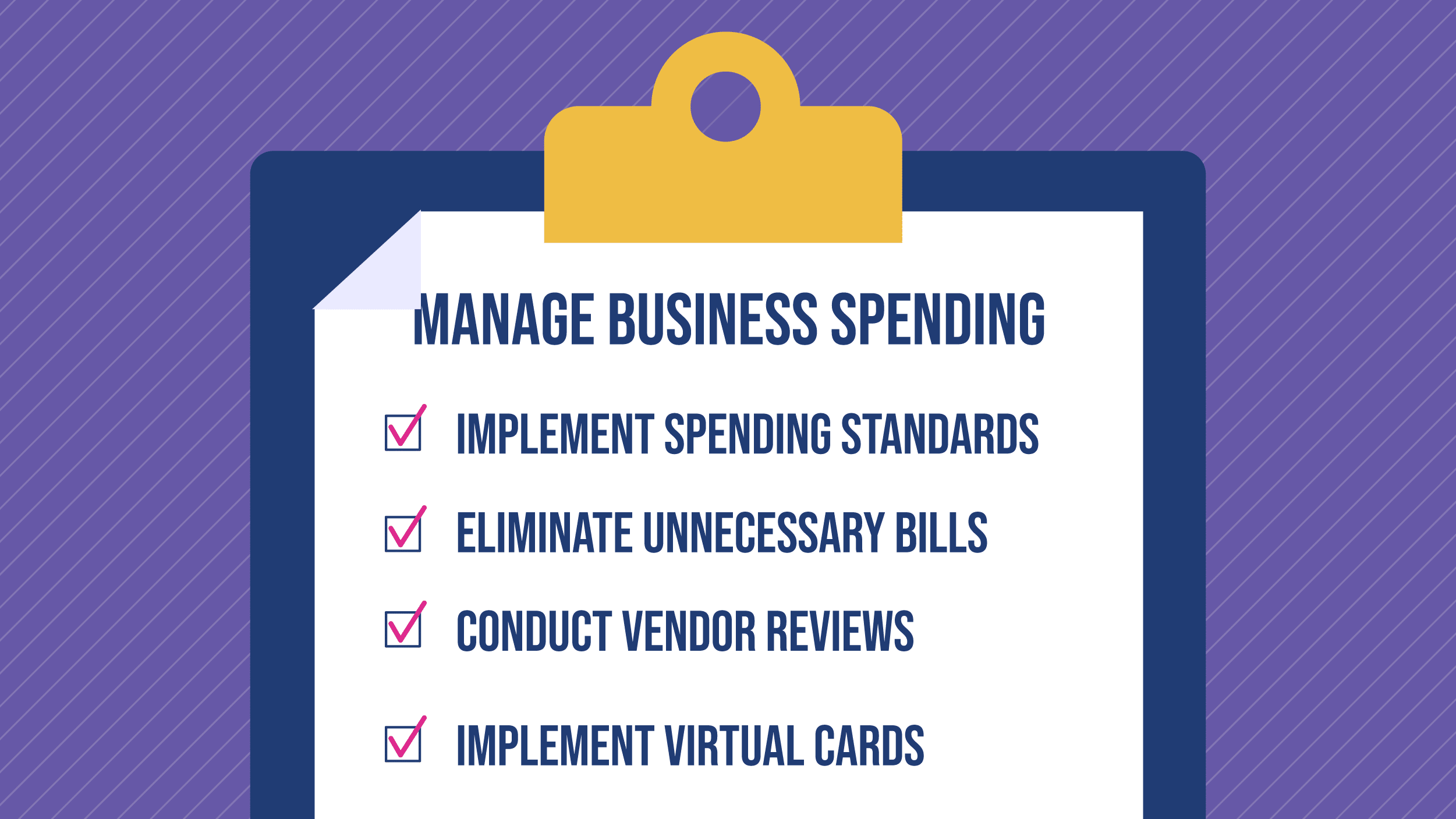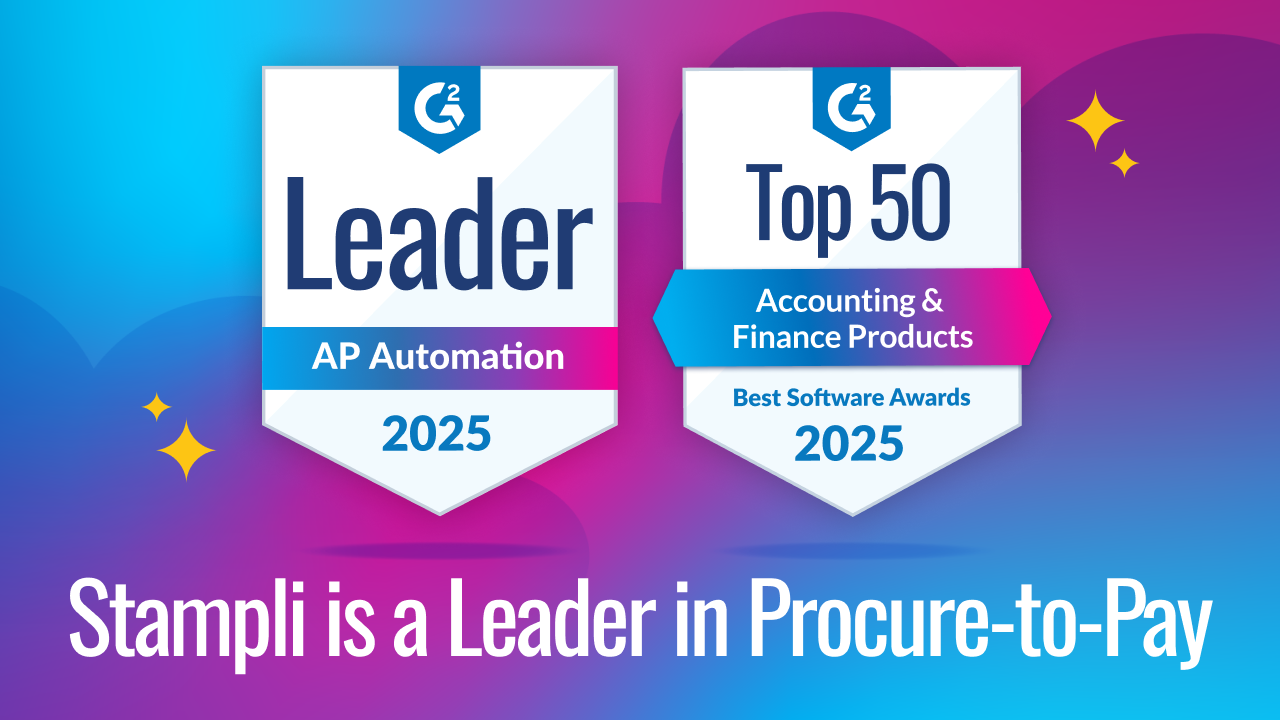Business Spending: A Guide for AP to Smarter Financial Management

Tracking, analyzing, and adjusting your business spending is an important function at every organization. This is because an accurate view of spending will provide insights that will not only save your company money and improve the bottom line, but also allow you to invest savings into activities that will enhance the business and drive you toward larger organizational goals.
Everyone knows the tired trope of the exasperated accountant when analyzing a credit card statement and trying to identify shadow spend; “How did you spend so much money last month!?!” but we can assure you, there’s a lot more to the function of analyzing your business spending.
In this post we’re going to discuss how to plan, track, and control business spending. Getting your arms around the overall concepts behind how your organization should deal with business expenses is hugely important, especially for companies experiencing rapid growth.
What is Business Spending?
Business spending (or business expenses) are necessary costs every business incurs as they go about delivering its product or service to its customers. There are dozens of types of business expenses and it’s important to track and categorize them for tax purposes, as well as general business optimization.
There are three basic categories of business expenses:
1. Fixed cost
These are your routine expenses that don’t really change very much in regard to the amount very often. A common example of a fixed cost for business is office space rent.
2. Variable cost
These types of expenses come and go on a regular basis and can vary widely in their amounts, tax categorization, and frequency. If your business uses consultants or contractors, your payroll could even be considered a variable cost.
3. Periodic cost
These expenses are the most infrequent, which can make them harder to plan for. An example of this type of expense would be a large bill to repair or replace an important piece of equipment at your company.
These categories are mostly used for financial planning. For tax purposes, there is an entirely separate categorization that we won’t get into in this post, but you definitely should get into with your tax professional.
You can’t grow if you can’t afford to, so understanding how and why money is flowing out of the business is an essential function.
How to Manage Business Spending in 2021

Roaming around your organization slashing budgets might not make you the most popular person at your company, but a logical approach to managing expenses will pay off for you (and your coworkers!) when it comes time for the quarterly P&L meeting. Here are our favorite tips for better expense management.
Implement spending standards
We’re not fans of unnecessary bureaucracy, but creating and introducing policies on how business expenses can be conducted can save your organization money.
For example, you might create a policy that airline travel must be booked at least one month in advance of the trip unless otherwise approved. This would allow you to (a) make travel costs more predictable since you’ll know to factor them into your monthly spend, and (b) potentially reduce spend by avoiding peak last-minute ticket costs.
Also, consider setting guidelines around employee activities that require company and what the appropriate protocol is for them. Collaborate with department heads to come to a figure that works for everyone.
Reduce or eliminate unnecessary bills
It sounds so basic, but you’d be surprised how often certain legacy expenses, sponsorships, and donations continue to get paid long after their value has passed. Let’s face it—some of those expenses were likely incurred through relationships that may or may not exist anymore.
Conduct due diligence on your organizational spending and follow up with the employees approving the costs. If applicable, use your new spending standards (see above) to eliminate any confusion.
Conduct regular vendor/supplier reviews
Are you getting the best value from your vendor and suppliers? It’s not always about the lowest price, as oftentimes you’ll pay more for better service, but it’s important to routinely conduct an analysis of the market to make sure you’re receiving the appropriate value from your vendors and suppliers.
How often you do this is up to you, and you’ll likely need to engage your cross-departmental coworkers to help you.
Remain diligent around departmental budgets
Breaking your organizational spending into departmental budgets is crucial for large and growing businesses. This not only allows the accounts payable (AP) department to track company expenses on a more granular level, it also creates more structure around the ROI of your expenses.
The process of each department head to plan and submit a proposed budget is an absolutely essential part of virtually every company no matter the size. Learn more about using your OpEx budget to create ROI in this related post.
Find discounts
There are plenty of ways to find discounts—from negotiating with suppliers to looking through the classifieds—but right now we’re talking about discounts from an accounts payable perspective.
For example, did you know that early payment discounts with your vendors can save you as much as 1-3%, but only 23% of companies are taking advantage of this discount? Of course, in order to earn those early business-to-business (B2B) payment discounts you’ll need to have an incredibly streamlined invoice processing system, but that’s a blog post for a separate time.
Go electronic
We can’t speak for every other department out there, but switching analog systems to digital in your AP department can have massive savings, along with a host of other benefits such as helping you solve project management issues, streamline operations, or automate tons of different business tasks.
Consider virtual credit cards
If you haven’t heard, virtual credit cards have been around for a few years and have shown great utility for companies looking to clean up their business spending habits. We’ve written about them before, but a virtual card is essentially a customizable business credit card without the plastic.
This leads to enhanced security, but also plenty of operational benefits for the AP department. For instance, you can create as many virtual cards as you need to and give only specific people access. Beyond that, you can set up the virtual card for a one-time payment (with a set spending limit) or for repetitive monthly purchases.
Virtual cards help you have better visibility into the expenses of your organization.
And that leads us to one last point…
Control Corporate Credit Card Spend with the Stampli Card

As an AP automation platform, we recognized the benefits of virtual cards for AP and finance teams. In time, we’ve been able to add them to our growing list of services, which now include the Stampli Card, and Stampli Direct Pay where you can make both paper check and ACH payments , along with our flagship AP automation platform.
With the Stampli Card, you can:
- Create as many virtual cards as you need
- Assign cards to single or multiple cardholders
- Define the purpose, vendor, amount and usage type of each card
- Prevent fraud and misuse company wide with powerful permission settings
- Pre-define the correct general ledger codes and any customized fields for proper cost allocation
Stampli Card allows you to take full control of corporate credit card spend. Combine that with the most powerful AP automation and invoice management system available, where you you can track invoices, credit card transactions, and vendor payments all in one place.
To get all the benefits out of virtual card payments and see what Stampli has to offer, sign up for a free demo!




